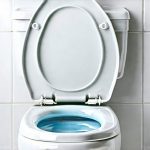Recurrent bladder infections, often referred to as recurrent cystitis, are a frustrating reality for many individuals, particularly women. Experiencing repeated urinary tract discomfort can significantly impact quality of life, leading to anxiety, disruption of daily routines, and the constant worry of another flare-up. While a single bladder infection is unpleasant, the cycle of recurrence demands a proactive approach focused on understanding contributing factors and implementing preventative strategies. It’s important to remember that managing recurrent infections isn’t about eliminating bacteria entirely – our bodies naturally harbor many microorganisms – but rather about supporting a healthy urinary system and minimizing conditions that allow harmful bacteria to thrive.
The challenge with recurrent UTIs lies in their complexity. They aren’t simply caused by ‘bad hygiene’ as often presumed, but are frequently linked to a confluence of factors including anatomical predispositions, hormonal changes (especially during menopause), sexual activity, genetics, and even underlying medical conditions. Understanding your personal risk factors is the first step toward effective management. This article will explore evidence-based practices that can help limit the frequency and severity of these infections, empowering you to take control of your urinary health. It’s crucial to consult with a healthcare professional for personalized advice and treatment plans; this information serves as a guide to informed self-care, not a substitute for medical evaluation.
Understanding Recurrent UTIs & Identifying Risk Factors
Recurrent UTIs are generally defined as two or more confirmed bladder infections within six months, or three or more within a year. While the exact reasons for recurrence vary greatly between individuals, there are several common themes and identifiable risk factors. Often, the bacteria Escherichia coli (E. coli) is responsible for these infections, originating from the digestive tract. However, other microorganisms can also cause UTIs, including Klebsiella pneumoniae, Proteus mirabilis, and even fungi in some cases. The urinary tract’s natural defenses – a constant flow of urine to flush out bacteria, the acidity of the urine itself, and the presence of protective compounds – are sometimes insufficient to prevent colonization and subsequent infection.
A key factor contributing to recurrence is often incomplete eradication of the initial infection. While antibiotic treatment typically resolves acute symptoms, some bacteria may remain dormant within the urinary tract lining, leading to a relapse when conditions become favorable. Another significant risk factor is sexual activity, as it can introduce bacteria into the urethra. Diaphragm use for contraception has also been linked to increased UTI recurrence due to its potential impact on pelvic floor muscles and urinary flow. Furthermore, anatomical variations, such as a shorter urethra (more common in women), can make it easier for bacteria to reach the bladder.
Finally, postmenopausal women are particularly vulnerable due to declining estrogen levels. Estrogen plays a vital role in maintaining the health of the vaginal flora and the integrity of the urinary tract lining; its reduction can lead to changes that increase susceptibility to infection. Conditions like diabetes, which compromises immune function, and any underlying bladder or kidney problems also contribute significantly. Identifying your specific risk factors – through careful self-assessment and discussion with your doctor – is paramount to developing a tailored prevention strategy.
Lifestyle Modifications for UTI Prevention
Beyond medical interventions, several lifestyle modifications can profoundly impact the frequency of recurrent UTIs. These strategies focus on strengthening natural defenses and minimizing opportunities for bacterial colonization. Hydration is arguably the most important aspect; drinking sufficient water helps dilute urine and promotes frequent urination, effectively flushing out bacteria. Aim for 6-8 glasses of water daily, adjusting based on activity level and climate. Avoid excessive caffeine and alcohol, as they can irritate the bladder and potentially worsen symptoms.
Diet plays a role too. While there’s no ‘UTI diet,’ consuming foods that support immune function (vitamin C-rich fruits and vegetables) and gut health (probiotic-rich yogurt or fermented foods) can be beneficial. Some evidence suggests cranberries, specifically in unsweetened juice form, may help prevent bacteria from adhering to the bladder wall, though this is still debated and shouldn’t replace other preventative measures. Pay attention to your bowel habits; constipation can increase the risk of UTIs by placing pressure on the urinary tract. A fiber-rich diet and adequate fluid intake can help maintain regularity.
Finally, proper hygiene practices are important. While douching is strongly discouraged as it disrupts the natural vaginal flora, wiping from front to back after using the toilet helps prevent bacteria from the rectal area entering the urethra. Consider wearing cotton underwear rather than synthetic materials, and avoid tight-fitting clothing that can trap moisture and create a breeding ground for bacteria. These seemingly small changes, when consistently implemented, can collectively make a significant difference in reducing UTI recurrence.
Optimizing Urinary Habits
The way we urinate often goes unnoticed, but it profoundly impacts urinary health. One critical aspect is avoiding prolonged holding of urine. Regularly emptying the bladder prevents bacterial overgrowth and reduces pressure on the bladder walls. Aim to urinate every 2-3 hours, even if you don’t feel a strong urge, and always empty your bladder completely. Similarly, post-coital urination – urinating shortly after sexual activity – is highly recommended, as it helps flush out any bacteria that may have been introduced during intercourse.
Another often overlooked factor is the technique of double voiding. This involves emptying the bladder, waiting a few minutes, and then attempting to empty it again. It ensures more complete bladder evacuation, minimizing residual urine where bacteria can thrive. If you experience difficulty with complete bladder emptying or frequent dribbling after urination, consult your doctor as this could indicate an underlying issue requiring evaluation.
Finally, pay attention to any changes in your urinary patterns – increased frequency, urgency, burning sensation, cloudy urine, or blood in the urine – and address them promptly. Don’t self-treat; seek medical advice to rule out infection and receive appropriate treatment. Recognizing these subtle signs can prevent a minor issue from escalating into a full-blown UTI.
Addressing Hormonal Changes & Pelvic Floor Dysfunction
For postmenopausal women, hormonal changes play a significant role in UTI recurrence. Estrogen therapy, whether systemic or localized (vaginal creams or rings), can help restore the integrity of the urinary tract lining and vaginal flora, reducing susceptibility to infection. Discuss this option with your doctor to determine if it’s appropriate for you, considering potential risks and benefits.
Alongside hormonal imbalances, pelvic floor dysfunction – weakness or imbalance in the muscles supporting the bladder, uterus, and rectum – can contribute to UTIs. Weakened pelvic floor muscles may lead to incomplete bladder emptying and urinary leakage, creating an environment conducive to bacterial growth. Pelvic floor exercises (Kegels) can strengthen these muscles, improving bladder control and reducing UTI recurrence. Consulting a physical therapist specializing in pelvic health is highly recommended for personalized guidance and exercise programs.
Furthermore, conditions like cystocele (bladder prolapse) or rectocele (rectal prolapse) can also disrupt urinary function and increase the risk of UTIs. These conditions may require medical intervention, such as surgery or pessary use, to restore proper anatomical support and improve bladder emptying. Addressing these underlying issues is crucial for long-term UTI management.
Exploring Proactive Treatments & Supplements
While lifestyle modifications are foundational, several proactive treatments and supplements show promise in reducing UTI recurrence. D-mannose, a naturally occurring sugar found in cranberries and other fruits, has been shown to prevent E. coli from adhering to the bladder wall. It’s available as a supplement and can be used prophylactically or at the first sign of symptoms. However, it’s important to note that D-mannose is most effective for preventing E. coli infections; it won’t treat UTIs caused by other bacteria.
Another promising avenue is probiotic supplementation, specifically strains targeting vaginal and urinary health. Probiotics help restore a healthy balance of microorganisms in the gut and vagina, strengthening natural defenses against infection. Look for probiotics containing Lactobacillus species known to colonize the urogenital tract.
Finally, some individuals find relief with urovacs – oral vaccines containing inactivated bacteria commonly causing UTIs. These vaccines stimulate the immune system to recognize and fight off these bacteria, reducing recurrence rates. However, urovacs are not widely available and require a prescription from a healthcare professional. It’s vital to discuss all treatment options with your doctor to determine what’s best suited for your individual needs and medical history. Remember that supplements aren’t regulated like medications, so choosing reputable brands is essential.





















